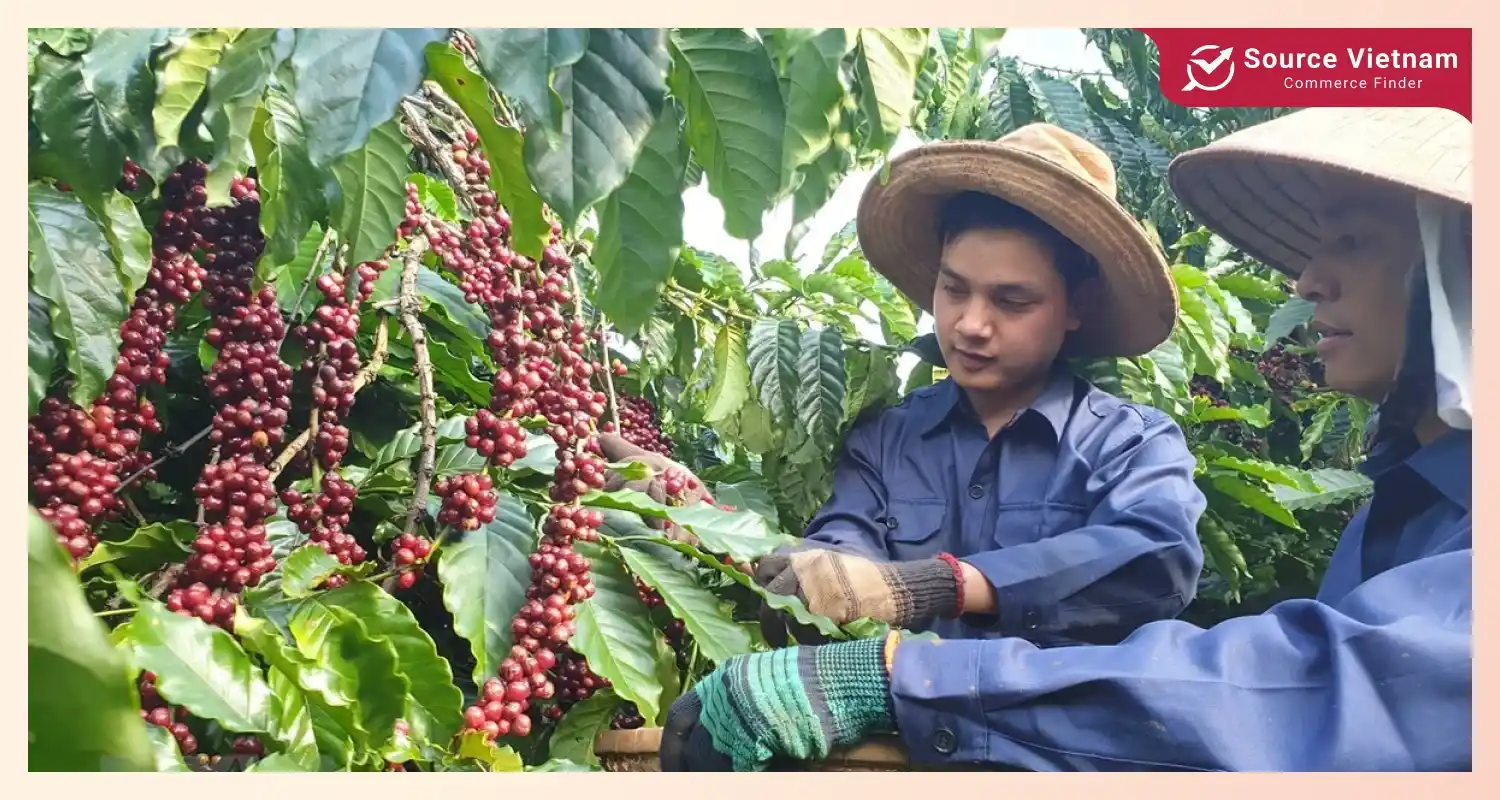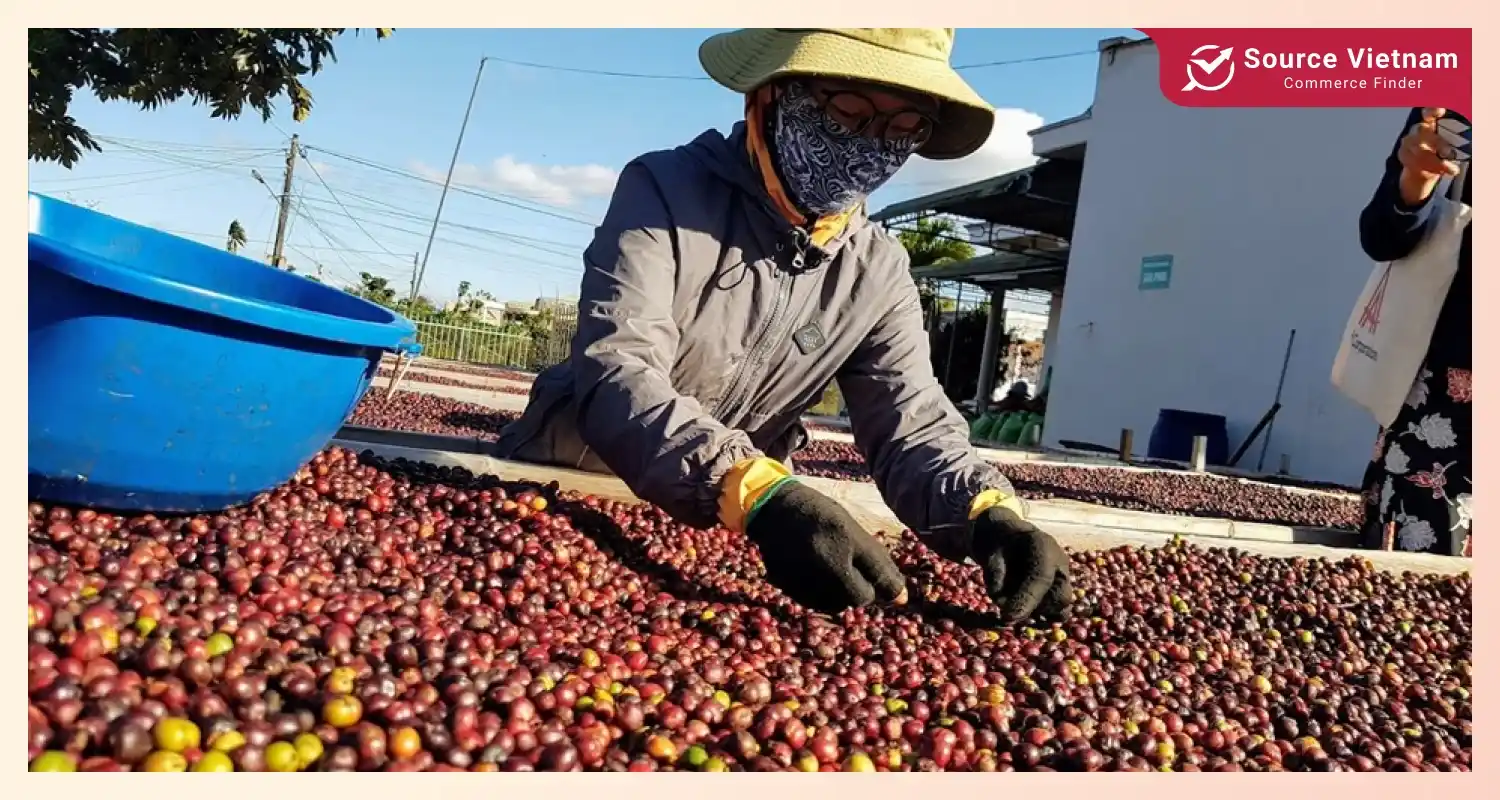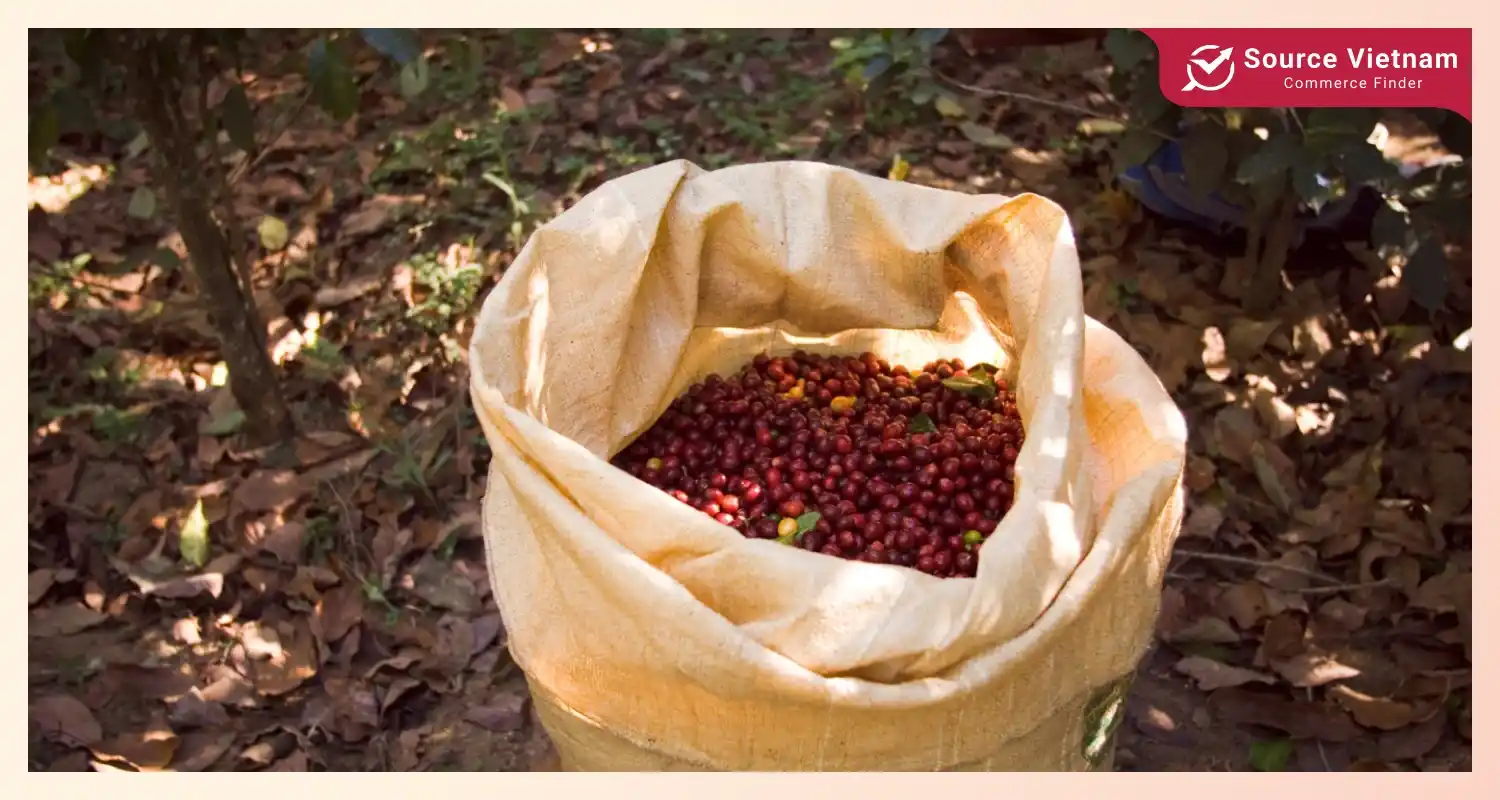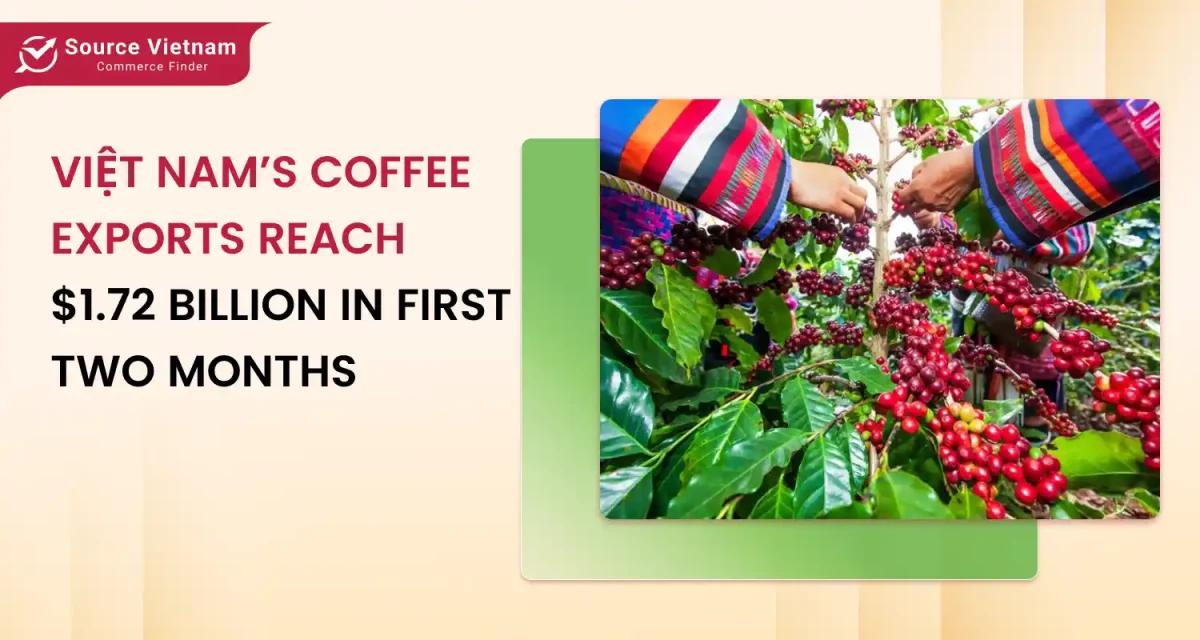Insight:
- In 2024, Vietnam’s coffee industry experienced significant growth in export value despite decreased production due to limited supply.
- The domestic market also saw a substantial shift toward high-quality coffee consumption, presenting excellent opportunities for local and international businesses.

2024 marks an important milestone for Vietnam’s coffee industry, as it is the first time the export value has exceeded 5 billion USD, solidifying Vietnam’s position as the world’s second-largest coffee exporter. Although export volume decreased, coffee prices rose sharply due to global demand and a limited supply.
With a vibrant domestic market and increasing competition, Vietnam’s coffee industry faces opportunities and challenges. This article will provide the latest data and market trend analysis to help you better understand the overall picture of Vietnam’s coffee industry today.
Vietnam’s coffee export situation in 2024

In 2024, Vietnam continued to maintain its position as the second-largest coffee exporter in the world, with total export value reaching 5.48 billion USD, surpassing the 5 billion USD mark for the first time. Despite an 18.8% decrease in export volume, which dropped to 1.32 million tons, the sharp rise in coffee prices resulted in a record-high export value. Specifically, the average export price reached 4,151 USD/ton, a 56.9% increase compared to the previous year, reflecting strong global demand. These figures show that Vietnam’s coffee industry is shifting significantly, focusing more on value than volume.
The European Union (EU) remains Vietnam’s largest coffee market in 2024, with leading countries including Germany (11%), Italy (8.1%), and Spain (8%). The Asian market has also recorded impressive growth, particularly in Malaysia, where imports increased 2.2 times, and the Philippines, which saw a 2.1 times increase compared to last year. This indicates that Vietnamese coffee is becoming more popular in Europe and Asia, opening up many future market opportunities.

In 2024, global coffee prices reached their highest levels in nearly 50 years, causing significant market fluctuations. The main reason behind this surge was adverse weather conditions in Brazil and Vietnam, two of the world’s leading coffee producers, which led to a sharp decline in supply. This resulted in an average export price of 4,052 USD/ton for Vietnamese coffee during the first 11 months of 2024, a 57% increase compared to the previous year. This volatility has affected producers and directly impacted retail prices and consumer habits worldwide.
Coffee consumption trends in Vietnam

Coffee consumption trends in Vietnam are undergoing a noticeable shift, with strong growth in the popularity of roasted, instant, and specialty coffee. Consumers increasingly focus on product quality, sourcing, and sustainable processing methods. This has driven local brands to continually innovate, offering products that meet the market’s growing demands.
In this context, local brands such as Trung Nguyên, Highlands Coffee, and Phúc Long are rapidly expanding, with Phúc Long operating 176 stores and aiming for international markets. Meanwhile, global brands like Starbucks and The Coffee Bean face significant challenges due to high operating costs, especially the expensive rental prices in major cities like Ho Chi Minh City and Hanoi. This has created a highly competitive market between domestic and international businesses.
Challenges and development opportunities
The challenges that Vietnam’s coffee market needs to face

Vietnam’s coffee market is growing rapidly but faces several significant challenges. One of the most pressing issues is the high operating costs, especially the rental prices in major cities such as Ho Chi Minh City and Hanoi.
For instance, rental prices in Ho Chi Minh City can reach 273 USD/m²/month, while in Hanoi, it is slightly lower at 178 USD/m²/month. These high rental costs pressure businesses, particularly those looking to expand their store networks. The expense of securing prime locations in high-traffic areas can create financial barriers for smaller firms and startups, limiting their growth potential and increasing the initial investment required to establish a presence.

In addition to high operational costs, the market is highly competitive, with hundreds of local and international coffee brands operating in the same space. Domestic brands like Trung Nguyên, Highlands Coffee, and Phúc Long are aggressively expanding within Vietnam and internationally.
Meanwhile, global brands such as Starbucks and The Coffee Bean & Tea Leaf are also trying to establish a foothold in the market. The intense competition forces businesses to innovate continuously, offer superior products, and create unique experiences to stand out. As a result, companies need to stay ahead of consumer trends and differentiate themselves in a crowded market to attract and retain customers.
The opportunities and prospects of Vietnam’s coffee market

Despite the challenges, the Vietnamese coffee market offers numerous growth opportunities, particularly in the export sector. As global coffee consumption continues to rise, the demand for coffee beans, especially high-quality and ethically sourced products, is expected to grow. Vietnam, one of the world’s largest coffee exporters, stands to benefit from this increase in demand.
The growing popularity of specialty coffee, domestically and internationally, presents an opportunity for Vietnamese producers to invest in premium coffee varieties. By focusing on quality over quantity, businesses can cater to the rising global demand for high-end coffee, which is often willing to pay a premium for well-sourced, sustainably grown products.

Furthermore, consumers are increasingly drawn to products with clear sourcing and transparency. This shift in consumer behavior presents an opportunity for Vietnamese coffee producers to promote their products as sustainably sourced, traceable, and ethically grown. As global coffee consumers become more conscientious about the environmental and social impacts of their purchasing decisions, businesses that invest in sustainable farming practices and build strong ethical brands will be able to stand out in the market.
In addition to global export growth, there is an increasing demand for quality coffee in the domestic market. With consumers becoming more sophisticated and focused on high-quality coffee, companies can leverage this demand by diversifying their offerings, creating specialty coffee blends, and improving customer experiences. Businesses that focus on crafting premium products and providing exceptional service will be well-positioned to capture a growing segment of the Vietnamese market.
By capitalizing on these opportunities and focusing on premium quality, sustainability, and innovative products, businesses can succeed in the competitive domestic market and expand their reach in global markets. With the right strategies, Vietnam’s coffee industry can continue thriving, driving local and international growth.
Conclusion
In 2024, Vietnam’s coffee industry has experienced significant fluctuations, with strong growth in export value, shifting consumer trends, and fierce competition in the market. Local brands are expanding rapidly, while international companies face challenges with high operating costs. The Vietnamese coffee market is expected to continue developing by focusing on quality improvement, product diversification, and expanding exports.
For businesses to succeed, they must focus on high-quality coffee, build strong brands, and take advantage of global demand opportunities. For consumers, choosing products with clear sourcing and guaranteed quality enhances their experience and contributes to the sustainable development of Vietnam’s coffee industry. Follow SourceVietnam.com for the latest updates on the Vietnamese coffee market and business opportunities!

















